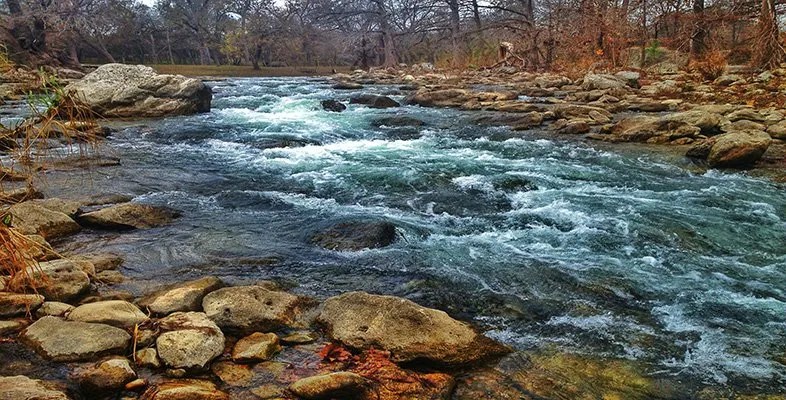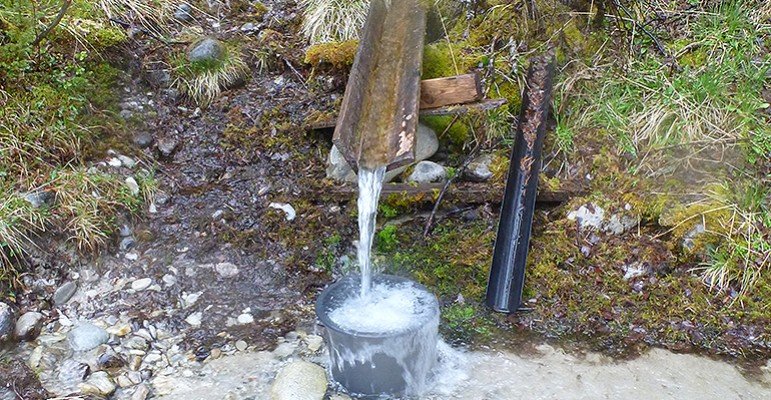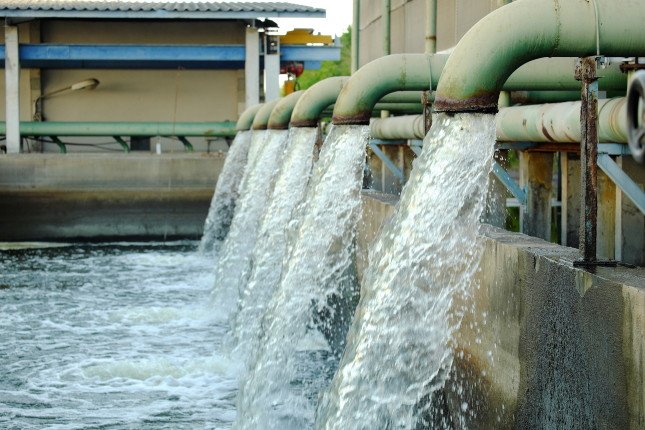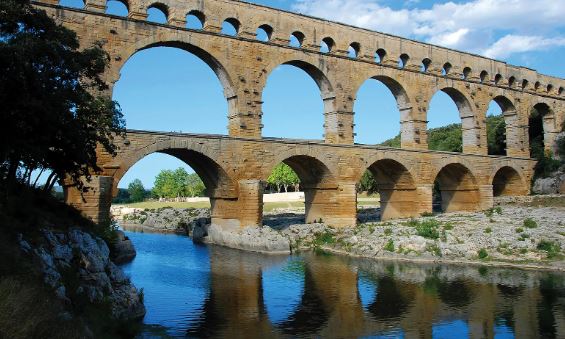
The sources of water are many and varied. In fact, most of the world’s mass is water; and it occurs in many different forms through-out our planet. The water that runs through your tap comes from any of the many public water systems, but none of these systems “produce” any water.
Same applies to bottled water which is also marketed as table water; the water is simply harnessed from natural or artificial sources, purified, and then sold as a product. Of course there are government agencies charged with making sure that both tap water and bottled water are safe to drink.
Knowing the sources of water can help one make better care of himself and family, and help one to think more carefully before wasting this very precious resource, without which life would be impossible on earth.
Sources of Water Definition and Types
There are 3 major known sources of water as stated below.
- Surface Water
- Ground Water
- Recycled Water
Those are the sources of water, where most of the water we use comes from. The particular sources of water you use will largely depend on what city you live in because every city builds its water system based on the available water sources. It is important now to discuss the different sources of water.
Example of Surface Water
1. Surface Water
Surface Water is any water that is found on the earth’s surface. This is usually a naturally occurring body of water such as a river, a stream, a lake, and so on. It could also be an artificial source; such as a reservoir. Recently, sea water has been added to the list of surface water sources; the water is prepared through a process called desalination. This will be discussed later.
Types of Surface Water: Rivers, Lakes, Streams, Sea.

Example of Ground Water
2. Ground Water
Ground water is water that present beneath the earth’s surface. This is usually water that fills the space between fractured rocks, as well as soil particles under the surface of the earth.
Types of Ground Water: Bore Holes from which water is pumped out.

Image depiction of a Recycled Water
3. Recycled Water
Recycled Water is that which has been used before; (perhaps sewage, or industrial waste water), and then passed through a treatment plant before being channeled back to homes for use.
Types of Recycled Water: Water Recycled from public sewage, water recycled from industries.
Where Does The Water You Use Come From?
Regardless of where you live, there is hardly any water that is exclusive to any particular place, or that belongs to anybody. Water is one fluid and globally speculating resource; called the great water cycle.
The water cycle is the naturally occurring system in which water moves continuously, changing form in the process. Therefore, water in a far away river, lake or ocean may travel through the air, coming down as rainfall in your neighborhood, and may then be put to use for drinking, cooking, bathing or other uses. From there, the water may end up in a public sewage system, where it may be recycled, while some of it will evaporate, from where it may travel to another area or country.
The Water Cycle: A Lay Man’s Definition
The Water Cycle is a natural system through which water goes around. An example is water from a pot which when left out in the sun becomes evaporated. The water goes up in the sky, and becomes condensed as a cloud. What follows is precipitation which we call rainfall.
The Water Cycle May Be Broken Down Into The Following Processes
Evaporation = Condensation = Precipitation
- Evaporation is the effect of the sun, by which water changes into gas, just as water left in a boiler will change into steam.
- Condensation is the process by which water in its gaseous state is packed together in great masses called clouds.
- Precipitation is the process by which condensed water molecules in the sky come down to the earth’s surface as rain.
The above explanation is an oversimplification; there are many other unmentioned processes which contribute to the water cycle.
For example: Transpiration is equally important (it is the process by which water leaves the bodies of plants and animals through the effect of the sun); it is similar to evaporation, and can be labeled as an alternative first step in the water cycle. Melting Ice and Snow can also be important first steps in the water cycle; the water is evaporated directly, or after it collects in pools.
Groundwater can also run off into streams which will be evaporated as they run off. Humans may tap into this groundwater; pumping it directly from the ground, from where it would still become part of the water cycle because it would still be evaporated, condensed, and then returned to surface as rainfall.
Some of the water that occurs below the surface as ground water gets there through a process called infiltration. From this process; some of the water coming down as precipitation, or melted snow and ice percolates below the soil in a process called infiltration.
So while the water cycle is large and universal; it is also quite simple. While all the water in the world will eventually “mix” the process may not be as quick as one could expect.
These are some of the estimated times for the water to stay in a particular natural source; before changing form in the water cycle:
- Antarctica: An Average of 20,000 years
- Oceans: An Average of 3,200 years
- Glaciers: An Average of 20 to 100 years
- Seasonal Snow Cover: An Average of 2 to 6 months
- Soil Moisture: An Average of 1 to 2 months
- Groundwater (Shallow): An Average of 100 to 200 years
- Groundwater (deep): An Average of 10,000 years
- Lakes: An Average of 50 to 100 years
- Rivers: An Average of 2 to 6 months
- Atmosphere: An Average of 9 days
From the list above; Antarctica is most reliable reservoir of water; because water stays as Ice Sheets in that far location for an average of 20,000 years. However, that estimation is very much reserved because Ice has been reliably dated to 800,000 years in Antarctica, while Greenland has a similar outlook.
Water Storage
This section may be broken into natural water storage, and artificial water storage systems.
1. Natural Water Storage
Natural Water Storage includes; rivers, lakes, ground water, Ice Packs and of course Seas and Oceans. The biggest water storehouses on earth are the oceans. About 1,338,000,000 km3 of water is stored in oceans; and this represents about 97% of all the water on earth.
The biggest reserve of fresh water in the world is the ice caps, glaciers, and permanent snowpacks. This accounts for 24,064,000 km3; which is 68.7% of all freshwater on the planet. However, this figure is just 1.7% of the planet’s total water volume.
2. Artificial Water Storage
Artificial Water Storage systems include; dams, aqueducts, artificial lakes, and treatment tanks in the various cities and municipalities. Individuals also can have their private water storage facilities; in some countries it is common for every house to have a well into which rain water is collected and stored. Below is an image of an Aqueduct. This is for many who do not know this ancient means of artificial water storage system.

Image of an Aqueduct
In recent times water is pumped up from the ground, and stored in overhead tanks.
In developed countries citizens who have private water storage facilities are advised to have their water tanks tested annually to avoid illness causing germs.
What Water Sources Are Safe?
All water sources have some risk of contamination from germs, which is why the federal, state, and municipal authorities take steps to ensure that the water is clean and safe before it reaches the taps. There are several methods of water purification, including:
(1) Physical Processes; Such As Filtration, Sedimentation, or Distillation
- Filtration is a process via which impurities are removed from water; this usually uses a sieve, through which the water passes, thus removing the impurities.
- Sedimentation is a process via which impurities such as physical particles settle down to the bottom, and rest against a barrier, thus making the fluid clean.
- Distillation is a process via which water is evaporated; and then recollected as steam, thereby leaving any impurities behind.
(2) Biological Processes, Such As Sand Filters, Active Carbon
Sand filtration is very similar to filtration because the goal is to remove impurities by passing the water through a barrier; thus leaving the impurities behind, and thus making the water clean. In this case the barrier is sand, and the water is made to pass through it in a tank, thus making it clean. There is methodology involved in this process; the sand is set in layers of finesse.
Activated Carbon is a system of filtration that utilizes charcoal which has passed through a special system which makes it have very small holes in a very wide surface area available for absorption of the fluid. Therefore, when the water passes through it, it leaves the dirt behind.
(3) Chemical Processes; Such As Flocculation, Chlorination
- Flocculation is a process by which chemical compounds are added to water in order to make whatever sediments or impurities inside the water to bond together, thus forming large particles which can then be easily removed.
- Chlorination is a process via which chlorine is added to water in order to kill germs, thus making the water safe for drinking or for other uses.
(4) Use Of Ultraviolet Light
The use of ultraviolet light is another very well established method of water purification; the water is made to pass through a channel where it is met with high intensity ultraviolet light. This process kills the germs and parasites, thus making the water clean and safe.
Tap water, which comes from municipal water treatment plants usually passes through filtration, chlorination, and flocculation, while bottled water may undergo sand filtration, activated carbon and ultraviolet light.
Due to the public outcry about the use of chemicals in the purification process by public water boards, it is advisable to call your municipal authorities to find out exactly what purification systems are used. One may also find out exactly what chemicals are used.
After that one may do some research before deciding whether to continue drinking the water.
Private water systems may be purified with simpler methods such as distillation, ultraviolet light, and filtration. It is possible to combine two or three water purification systems without adding any chemicals to the water. It is important to ensure that regular checks are made to ensure that the water purification systems are working, and that the water is safe to drink. Filtration caps should be changed at regular intervals.
Why Do We Experience Water Shortages?
Water shortages may occur when we use up the available water in storage faster than the supply can be replenished. Sometimes equipment malfunctions can result in outages, while natural disasters can also cause water to become unavailable, sometimes for extended periods of time.
However, one major problem affecting the supply and availability of water is wastage. Many people leave their taps and showers running endlessly thus resulting in wastage of gallons of water which could have been used by many other people. This can be easily observed in buildings that have their own private water storage facilities; when the water is wasted it results in discomfort and complaints by other residents.
When we take greater care about how we use water, we can reduce the instances of water shortages, and reduce the pressure on the municipal authorities who supply us with the water.
Another potential reason why we have water shortages may be that the current water supply architecture is just not good enough. Water is often pumped up from deep in the ground, utilizing a lot of energy, when scientists contend that it could be easier to pump the water inland from the seas, and then purify it through desalination.
In summary, what we can learn from the sources of water is that man has only copied from nature when it comes to purifying water because distillation already existed in the form of evaporation or transpiration; and sand filtration already existed in the form of infiltration. The sun’s ultraviolet rays have purified water since the beginning of time, and it does so without any energy costs.




